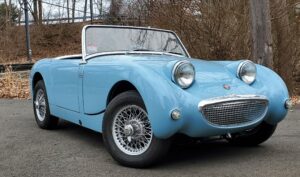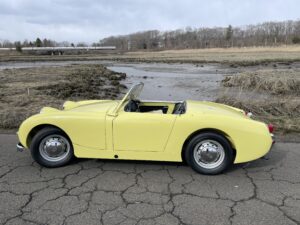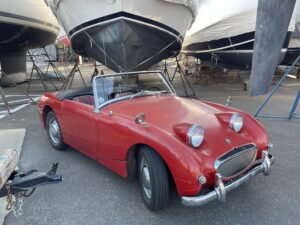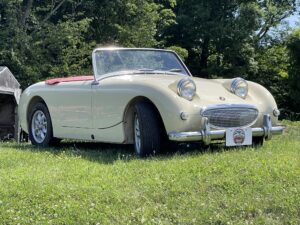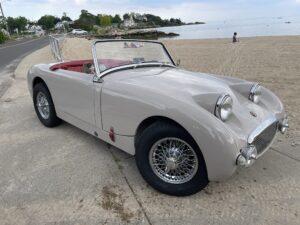This is John’s Bugeye, which came to us with an erratic misfire under high load. The symptoms were the same as we’ve seen when valve guides are too tight (we’ve written about this in the past). I thought you might like to read about our diagnostic process. We make mistakes too.
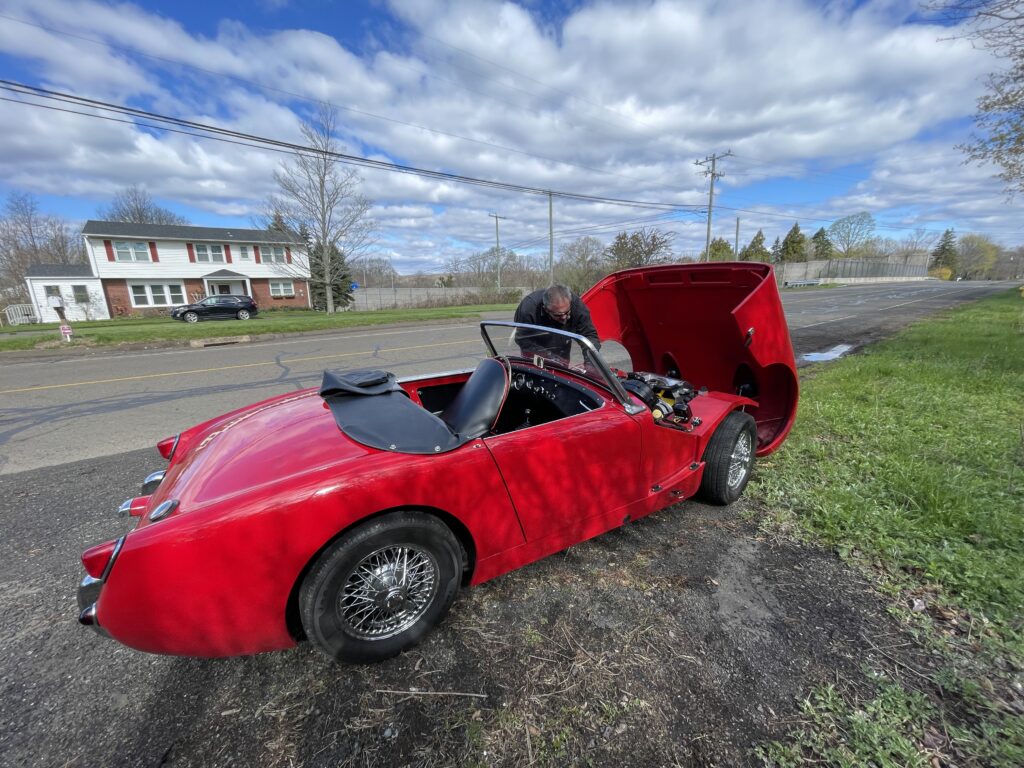
Under extreme heat and load the engine would break up and misfire. Once we pulled off the road and the temperature dropped just enough, then the valve guides would relax and the engine would run beautifully once again. You could drive the car around town without this issue surfacing but once you were under the highest loads (on the highway, downshifting to climb a hill, for example), only then would this problem resurface. So we did what any good shop would do… rip off the head and send it to the machine shop for a proper milling of the guides to ensure adequate clearance for the valve stems no matter how hot they get. The machine shop verified that the guides were indeed too tight, and they honed them out to make sure the problem wouldn’t recur.
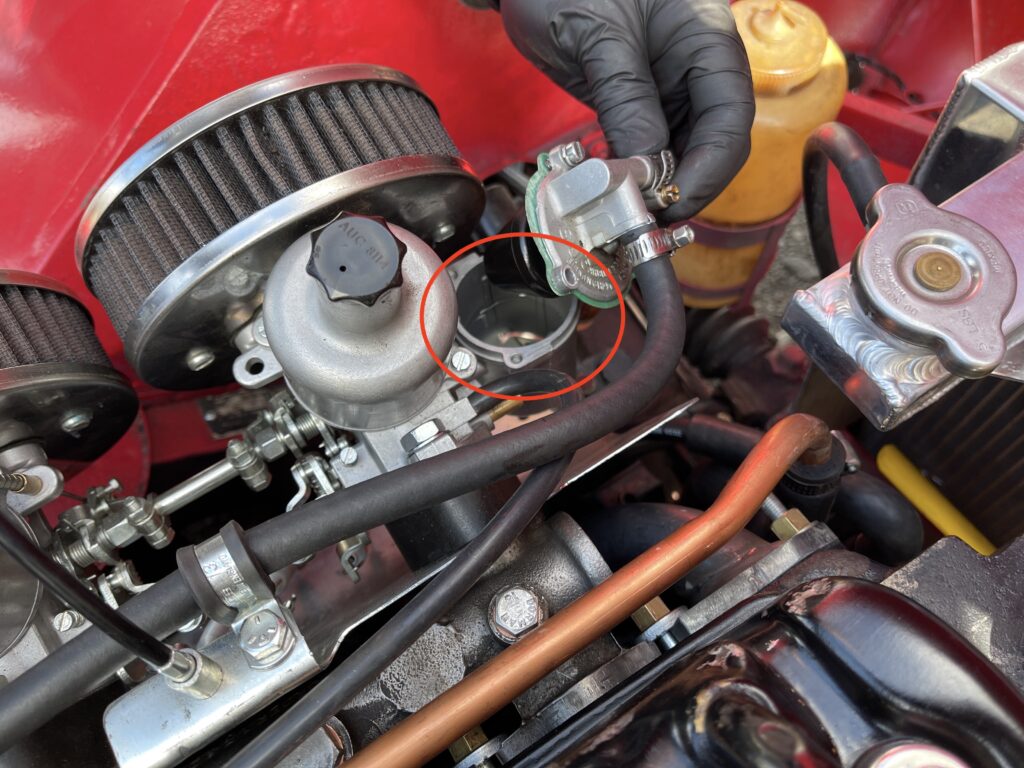
We didn’t build this engine originally, but with extreme confidence, we put the head back on, ready for a victory lap. Much to our surprise the problem occurred once again.
Bummer.
That brings us to the picture at the beginning of our post. More testing was needed. After a long hill climb in fourth gear, the engine began to stumble and break up, and I shut off the key. We pulled to the side of the road and Tucker removed the float bowl tops, only to find the front bowl full of fuel and the rear bowl empty! Thus, we had our smoking gun. Under extreme load we were not getting enough fuel. This seems so simple in retrospect; you have likely been thinking all along that this was a fuel delivery issue. But pulling the choke during misfire never solved the problem and I (mistakenly) felt that we therefore did not have a fuel delivery issue. I am often adjusting mixture with the choke on the fly on my diagnostic drives. Since it made no difference in this case, I abandoned fuel delivery as the culprit, which was my mistake.
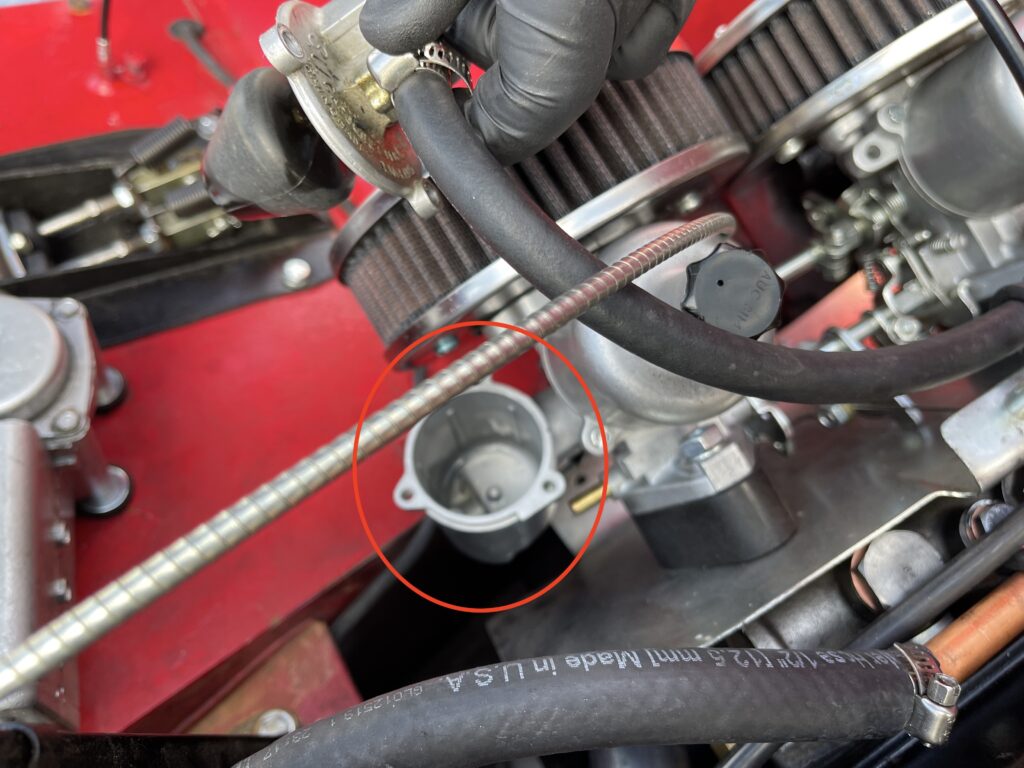
So one lesson here is that so many of these basic classic car issues are due to the basic ingredients of internal combustion. Before proceeding to head removal or anything else more drastic, you have to have fuel, air and spark. And before you rip anything apart, you better be damn sure that fuel, air and spark are present, and are present in the proper amounts. An abundance or lack of any of the three are equally as troublesome and will ultimately produce the same result: a breakdown.
But it’s not always that simple. In fact, I’ve had people contact us over the years and say their solid-state fuel pump failed, and I am always hesitant to believe them because there are so many links in the fuel delivery chain that can stop your engine. Our pumps have been bulletproof; we sell them with the utmost confidence that they will last a very long time. But coming back to John’s misfire, this must be a case of a weak fuel pump, right?
But we tried feeding the pump from a gas can, and the volume increased! The pump was innocent, as we had suspected. Removal of the pick-up line at the fuel tank revealed the true culprit.
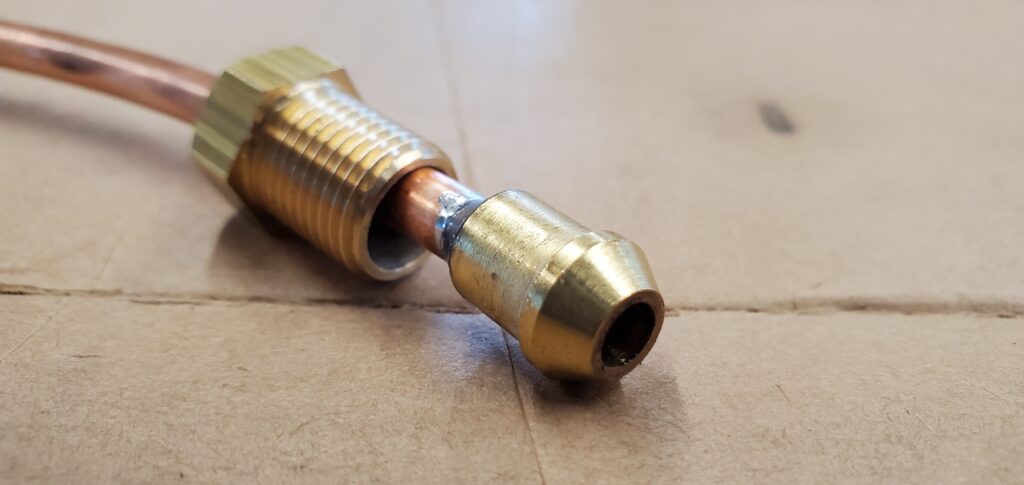
The nipple for the fuel pick up line is soldered to the fuel pick up pipe, as is shown below. A small amount of solder obstructed a portion of the pick-up line. A small piece of slag in the tank lodged on the solder obstruction, and this resulted in what amounts to a partially blocked artery. Our runner functions fine at rest but a high load induces chest pain. We could fortunately perform a rapid bypass to clear the obstruction and get this tank feeding the engine maximum volume once again. I pulled onto the highway for a zero to 79 MPH pull without a hiccup. (The maximum speed was saved on John’s GPS speedometer.)
The moral of this story is: don’t assume anything. Just when you are 100% certain what a problem is is when you find you might be missing something. Diagnostics require an open mind. Just because the last case presented this same way and you figured out the cause, doesn’t mean the same holds true today. In sports car diagnostics (and flying, medicine and lots of other disciplines) great diagnosticians respond to what they see, not to what they know to be true. These were all warranty repairs at no charge for the customer, so we have extra incentive to listen to our own advice!


